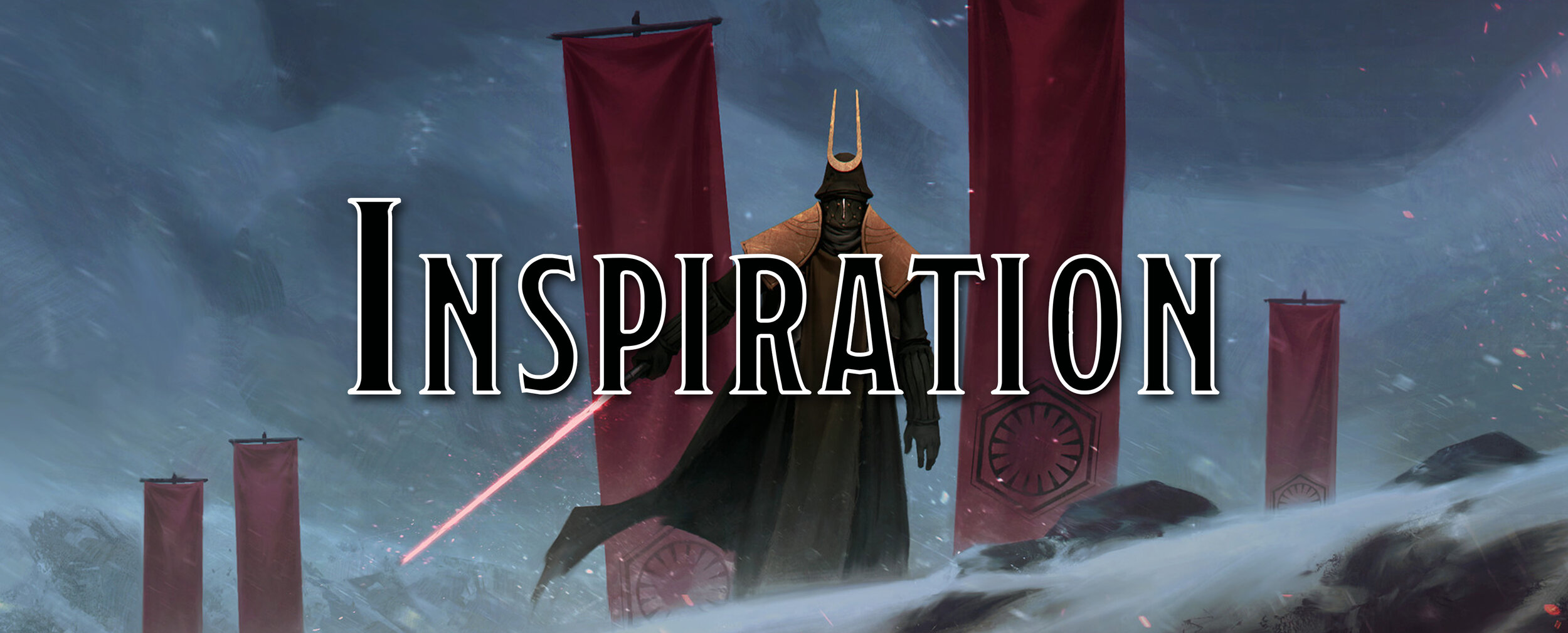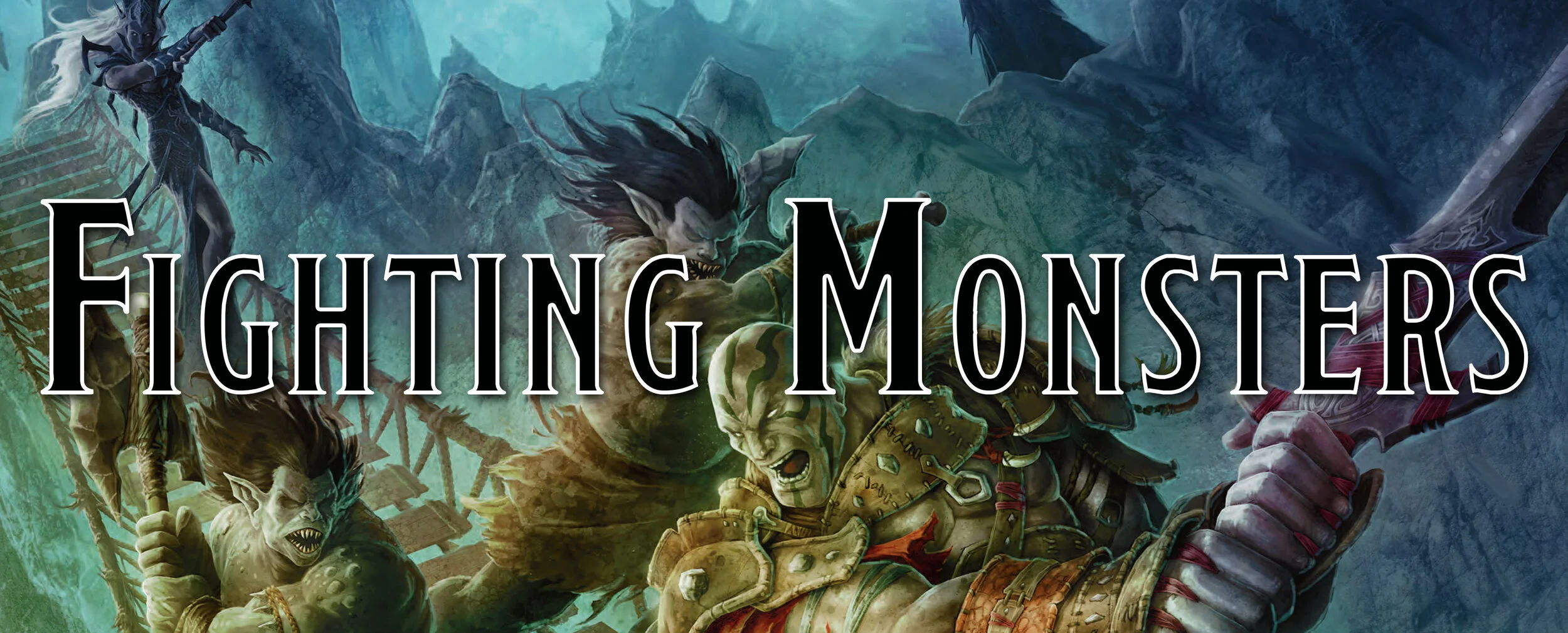Charisma in Combat
Header Art: Dungeon Fantasy Battle Scene by Felipe Gaona
There is a fairly noticeable lack of information in regards to skills and what exactly you can do with them in D&D 5e. It can make it hard for new GMs, or even experienced ones, to really know what every skill is for and what the difference between Investigation and Perception actually is. In addition, the combat system provided in the Player’s Handbook kind of makes it seem like you can’t really use them in combat since the only ones really called out are Perception, Athletics, and Acrobatics.
For many GMs, they might be hesitant to add in skill challenges inside of combat, or even know what part of the action economy that check requires. Talking is a free action, so can you use Intimidation freely since you are just yelling and screaming? And if you allow that, what does that even do? Making a creature frightened of you would be stepping on the toes of Berserker Barbarians. Just making it ‘roleplaying’ and then ignoring that the creature is scared? Well, then what’s the purpose of even rolling the check?
I like skills to have some fun things to do. In the past I’ve gone through using Intelligence based skills to recall knowledge, and today, I am looking at using your Charisma skills in combat!
For best results in GM Binder, use a Chrome Browser
Charisma Skills
There are four skills associated with Charisma; Deception, Intimidation, Performance, and Persuasion. These four skills make up the social pillar of the game and they are given only a couple of sentences each with vague examples provided. It’s pretty lackluster just reading through the book and seeing things like Perception, Stealth, and Athletics coming up a bunch and these are just kind of passed over with not much to do.
I decided to rectify this by giving you and your players a few more options! These new options are not meant to step on the toes of any features, but rather codify what you have probably already been doing in your games if the topic has come up.
Fascinating Display
Way back in the 3rd edition, there was a condition known as Fascinated. It’s pretty much useless in combat, as the condition immediately ends if someone even so much as draws a sword, but provides a wonderful way for you to escape a situation about to become combat. The basics information needed for this feature is that you should start this up before combat, this way you can try and fool some guards you are trying to sneak past, or just allow your rogue to get into position thanks to their excellent stealth.
Your beautiful performance won’t work during combat, once people are ripping each other apart with swords and spells, but it can be quite useful to distract creatures to help your party sneak past or get the drop on them.
To use this ability, it requires you to use your action every turn. Which, since this is probably going to be used just before combat, means you aren’t able to cast buffing spells on yourself before the conflict. So there is a trade-off if you want to run into combat with blur, mirror image, and protection from evil and good on you.
The reason you probably want to use this, as hinted at above, is because your allies can attempt to hide from a creature even if they are in bright light with no cover. Creatures they are attempting to sneak past are so engrossed by your performance, they can just silently slip past them and hopefully, no one fails their Hide check and ruins your sick dance moves.
Feint
It’s a bonus action to try and get advantage on your next attack roll. For rogues, this is pretty much the same as taking the Hide action and then launching their attack, except they get to use a different skill (Deception or Performance) to accomplish this.
Its power level is probably below just taking the Hide action because you aren’t making the check against a passive DC, but rather a chaotic d20 + modifiers check. Then again, most monsters have abysmal Insight checks so it might balance itself out that way. If you dislike the idea of rolling a bunch of Insight checks, you could also use the creature’s passive Insight check as the DC, which is just 10 + their Insight bonus (Wisdom modifier + Proficiency Bonus).
It’s a shame that more monsters in this edition don’t get more skills they are proficient in, but it kind of just goes to show that social skills are more of an afterthought.
Intimidating Presence
This ability actually has two different versions depending on what action you are willing to spend. For a bonus action, you can impose disadvantage on a creature’s next ability check or attack roll. An action allows you to impose a 1d4 on all ability checks and attack rolls until the end of their next turn. Once you use this ability against a creature, they are immune to your scariness for 1 minute.
It’s a fun one-off buff that could help you out in a scrap. It’s not as good as just hitting a creature over and over until it stops moving, but there are certain situations where being able to basically bane a creature for a turn can come in handy.
Misdirection
This bonus action allows you to move 5 feet away from a single creature without incurring an Opportunity Attack. This doesn’t step on the rogue or monk’s ability to disengage as a bonus action since it only affects a single creature and it’s only for 5 feet. This means if there are multiple creatures, you still incur from them. It’s not just a free get-out-of-there ability like disengage but does give options for other characters who are willing to roll the dice on their future.
Over Here
Sometimes you have to help an ally out when the dice just aren’t with them that night. When you see an ally about to attempt to Hide, you can use your reaction to yell and scream at a creature in an attempt to distract them from your ally. If you succeed, you impose a hefty penalty on their passive Perception to notice the hidden ally.
It’s a pretty nice debuff if you are going in against a dragon, who is quite perceptive, unlike many other monsters. Plus, it gives you something to do as your reaction, and we all want to do more at the gaming table - also, the rogue now totally owes you a cookie for saving their ass yet again.
Truce
I debated adding this one in since it is largely going to be under a GM’s purview. I added it because it really felt like it needed to be here and goes to show that “rulings not rules” is misunderstood. You can have rules presented, but that doesn’t mean you are bound by them in any way. Jeremy Crawford is (probably) not going to go to your house and beat you up for changing a ruling or rule.
This feature is simply to offer you a codified way of how your players can try and make a truce happen during their games. It’s not the only way, but it is A way that they could go about it. When we all have rules we can see and agree on, it makes running games that much easier. By offering at least a baseline for how something might work in your game, your players have greater understandings of how you will rule things for their ideas.
The basics of this feature are that if a character wants to attempt a truce with another creature, they must use their action to make displays of calling for surrenders or a truce. Then, the party must not make any hostile moves or try to cause any problems for the creature they are calling a truce for.
Now, like anything, this could be ‘cheesed’ by an invisible character hoping to backstab and be disingenuous. They may even metagame a bit and think that if they just fool the creature long enough so that they have their turn, they won’t have any actions or that the creature will only be able to use their reaction to make a single attack for readying an action. With this ruling, the creature they are attempting to truce gets a special reaction that allows them to hold their entire turn if their turn comes and goes in the initiative and the truce hasn’t been started. This is really just to dissuade metagaming and trying to work the system against itself to ‘cheat’ a sneaky victory in a very disingenuous way.
Variant Rule
Of course, adventuring parties don’t only fight a single creature for all of their fights. Occasionally, they get to fight hordes of creatures in a fight to the death, in which case only targeting a single creature might seem a bit meh. While this will increase the effectiveness of each of these abilities, you could decide that a character can target a number of creatures equal to half their Proficiency Bonus when they use it. This means that at first, characters can only target 1 creature, but as they get stronger and reach level 9, they can then target 2 creatures at a time, and by 17th level, can target 3 creatures!
Or maybe that isn’t enough for you, in which case you could just have it be that they can target a number of creatures equal to their Proficiency Bonus or some other metric, like their Charisma modifier.
Concluding our Check
Those are my ideas for using Charisma skills inside of combat. If you have some other ideas that you’ve used in your own games, I’d love to hear them! And of course, if you do implement this system, would love to hear what you and your players think of it all.
If you want a printer-friendly PDF of this homebrew, or any other homebrew or tool we’ve made, consider supporting us on our patreon! All hombrew that I’ve created or will create in the future will be uploaded to our patreon in printer-friendly versions. We appreciate any and all support!
Like what we are doing here?
Support us on Patreon!
You’ll get early access to deep dives, our Homebrew Hoard, and more!
Follow us on Twitter to keep up to date on everything we talk about!



